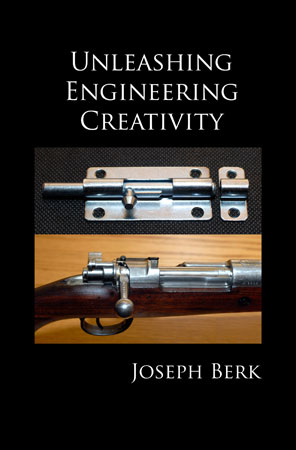|
|
Unleashing Engineering Creativity |
|||
|
Aimed At |
This course is for engineers, designers, business development specialists, and others charged with creating innovative products. |
||
|
Prerequisites |
While there are no formal prerequisites, the course assumes a design, engineering development, or business development background. |
||
|
Course in a Nutshell
|
|||
|
Customize It! Whatever the nature of your system and industry, we will customize the course to meet your specific needs and concerns. Here are some of the ways in which we can tailor the course to help you get more out of it:
|
|||
|
Learn How To Creativity is a skill that can be taught! In this course, you will learn how to:
|
|||
|
Workshop Outline Day 1: Introductory Concepts and Creativity Enhancement Techniques Introduction and Course Overview. Defining creativity. Creativity stages. Taylor’s hierarchy of creativity. Creativity obstacles, including fear of the unknown, fear of failure, reluctance to exert influence, frustration avoidance, resource myopia, participation reluctance, over-certainty, and structured thinking patterns. Brainstorming and Painstorming. Brainstorming approaches. Brainstorming rules. Identifying areas of customer dissatisfaction. Sources of customer product satisfaction information. Examples. Group exercise. Synectics. Disciplined idea harvesting. Documenting “I wish” comments. Including customer participation. Funneling ideas into manageable options. Examples. Group exercise. Functional Decomposition.Identifying functional requirements. Inputs and outputs. Flowcharting. Identify functional interactions and conflicts. Quality Function Deployment. Making trades. Examples. Group exercise. Biomimicry. Definitions. Seeking solutions by emulating nature. Finding appropriate emulation targets. Reducing cost and waste. Examples. Group exercise. Axiomatic Design. The independence and information axioms. Matrix methods. Transforming customer needs into products. Examples. Group exercise. Ethnography. Definitions and approach explanation. Gathering information by examining cultures. Understanding design impacts on individuals and cultures. Understanding the consumer experience. Examples. Group exercise. TRIZ. TRIZ background and development history. The theory of inventive problem solving. Using the TRIZ contradiction matrix and Altshuller's 40 design solutions. Analogical thinking. Examples. Group exercise. Lateral Benchmarking. Finding best practices. Looking outside your industry for best practices. Strategies for identifying lateral industries. Not knowing what can’t be done. Examples. Group exercise. Day 2: Additional Approaches and Course Wrap-Up Quality Function Deployment. The house of quality. Identifying requirements, needs and wants. Prerequisites. The whats, the hows, and the how muches. Benchmarking. The graphical approach. Quantification. Using Excel. Examples. Group exercise. Kano Model. Product development and customer satisfaction. The attractive, one-dimensional, must-be, indifferent, and reverse categories. Relationship to quality function deployment. Examples. Group exercise. Trimming. Identifying functions, developing approaches for alternative assignment, recipient functional assignment, function elimination, redesigning for improved functionality, and identifying new markets as a result of improved functionality. Examples. Group exercise. Nine Windows. The nine windows grid. Considering innovation from the perspectives of time (past, current, future) and space (super-system, system, sub-system). Examples. Group exercise. Concept Fans. Discovering alternative solutions. Graphical presentations. Taking steps back to gain a broader perspective. Similarities to mind mapping. Examples. Group exercise. Problem Focus. Expressing the right problem. Problem statement and restatement. 5 Whys. Present state – future state discussion. Checklists. Trigger words. Situation analysis. Examples. Group exercise. Bisociation. Blending elements from two fields previously considered unrelated. The comparison, abstraction, categorization, analogies, and metaphors matrix. Concept blending theories. Examples. Group exercise. Course Wrap-Up. Course review. Questions and answers. Plans for future actions. Course critique. |
|||
|
How You Will Learn A seasoned consulting manufacturing executive/instructor will present this course in an interactive lecture and workshop format. Along with the lectures, we use exercises, puzzles, case studies, and interesting group activities to enrich the instruction and emphasize the essential points. You will receive a printed Participant Handbook that includes all materials presented in class, which will help you remember and retain what you learned and apply it on your job. You will learn key creativity enhancement concepts from theoretical, practical, and organizational perspectives. |
|||
|
Our Expertise
|
|||
